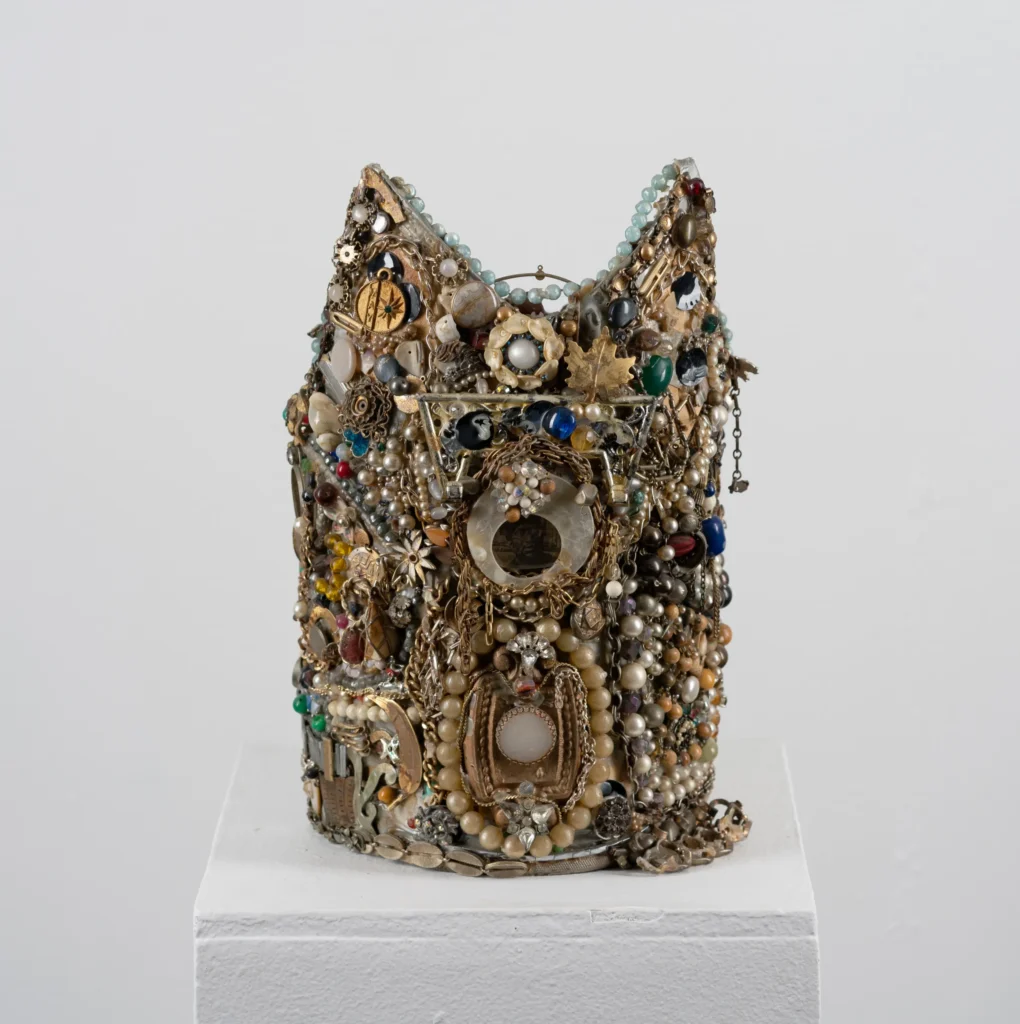ReSOURCE
Artists

Daniel “Sandman” Polk
Born on South Federal Street in Chicago, Daniel Polk (1929-after 1993) was a musician and an artist who created intricate crowns out of found costume jewelry and other castoff materials. At an early age, he was encouraged to push carts by his father, who saw it as a means to always have an income, but in later years he used his cart to clean the streets in his neighborhood as a purely volunteer effort. As a child, he performed at Olivet Baptist Church and Metropolitan Baptist Church. Polk came to be known as “The Sandman” in the 1940s when he performed in an electrified sandbox at the Rhumboogie Club. Polk made regular appearances at “The Alley,” a weekly happening in an alley off 50th Street between St Lawrence and Champlain that began with informal gatherings in the 1950s at a local garage. From a casual event with DJs spinning records, The Alley grew into a multivalent cultural event drawing participants from all over, encompassing live music, art making, and performance. Polk was a regular, known for his pushcart and the intricate crowns and medallions he created for Black men using a wire structure coated in papier-mâché and applying costume jewelry and other materials found while cleaning the streets. Polk was included in the 1975 “Black Esthetics” (later Black Creativity) exhibition at the Museum of Science and Industry. His surname sometimes appeared in contemporary publications as Pope.


